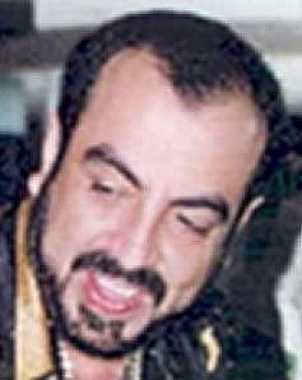Arturo Beltrán Leyva (Marcos Arturo Beltrán Leyva)

The Beltrán-Leyva Cartel was founded and named after the brothers Arturo, Alfredo, Alberto, Carlos and Héctor Beltrán Leyva after they separated from the Sinaloa cartel, which is led by Joaquín Guzmán Loera a.k.a. “El Chapo”. Arturo Beltrán Leyva and his four brothers worked as underbosses and security chiefs for the Sinaloa cartel leaders. The breakaway from the Sinaloa Cartel was motivated by the capture of Alfredo Beltrán Leyva “El Mochomo” (‘Desert Ant’) by the Mexican military on January 21, 2008 which the brothers attributed to a betrayal by their boss Joaquín “El Chapo” Guzmán. After this incident, the Beltrán Leyva brothers and their lieutenants defected from the Sinaloa Cartel and allied themselves with the Gulf Cartel and Los Zetas. Alfredo’s influence had penetrated deep into the Attorney General of Mexico office by bribing Mexico’s former drug czar, Noé Ramírez Mandujano and other top ranking officials. Ramírez Mandujano, who was the head of the country’s top organized crime unit SIEDO, received US$450,000 per month to tip them off on the how, when and where any actions or operations against them would be taken. On 30 May 2008, the United States Department of the Treasury sanctioned Beltrán Leyva under the Foreign Narcotics Kingpin Designation Act (sometimes referred to simply as the “Kingpin Act”), for his involvement in drug trafficking along with three other international criminals and three entities. The act prohibited U.S. citizens and companies from doing any king of business activity with him, and virtually froze all his assets in the U.S.
On December 11, 2009, in Ahuatepec, Morelos, a town bordering Cuernavaca, Arturo Beltrán Leyva held a Christmas party at a house located in one of the most luxurious gated communities in Cuernavaca. He hired artists such as Ramón Ayala, Los Cadetes de Linares and more than 20 prostitutes to entertain his guests. The Mexican Navy’s elite Special Forces unit surrounded the house and tried to capture him, but in the exchange of fire he escaped. Three gunmen were killed along with an innocent bystander (a neighbor) and more than 11 bodyguards were captured. Authorities confiscated US$280,000 in cash, 16 assault rifles (AK-47 and AR-15), 4 pistols, 74 rifle magazines and 1,700 rounds of ammunition. Mexican Navy intelligence kept track on him and one week later, on December 16, 2009 he was traced to another luxurious apartment community where a 90-minute shootout ensued. About 200 Mexican Marines, two Navy Mil Mi-17 helicopters, from which marines rappelled, and two small Army tanks surrounded the building complex where he was hiding. Approximately 20 fragmentation hand grenades were used by Beltrán Leyva’s gunmen to keep the Navy from advancing into his position.[citation needed] Arturo Beltrán Leyva and three gunmen were killed; a fourth gunman committed suicide. Among the items seized by authorities during this raid, there were US$40,000 in cash, several thousand Canadian dollars, five assault rifles (AK-47 and AR-15), one pistol and several religious scapulars and medallions. Analysts said the use of navy special forces was a notable development in the drug war because they are regarded as elite fighters who operate beyond the reach of corrupting influences. The Mexican government had listed Arturo Beltrán Leyva as one of its 24 most-wanted drug lords and had offered a US$2.1 million reward for his capture.
Born
- September, 27, 1961
- Mexico
- Badiraguato, Sinaloa
Died
- December, 16, 2009
- Mexico
- Cuernavaca, Morelos
Cause of Death
- multiple gunshot wounds

